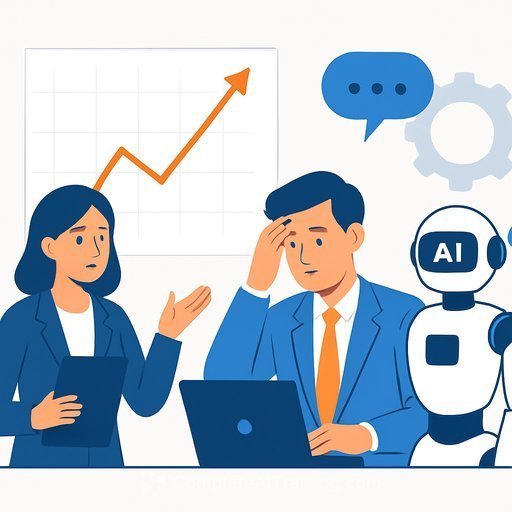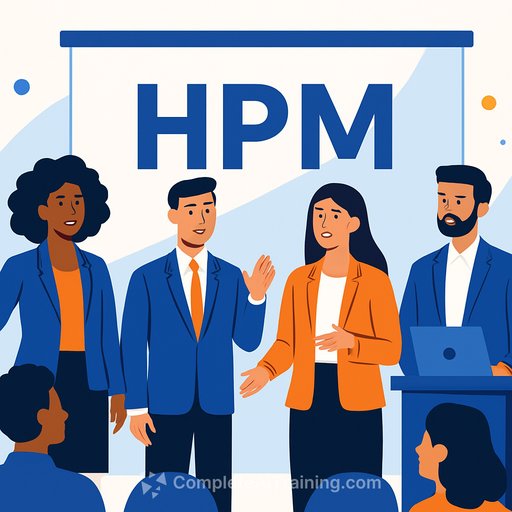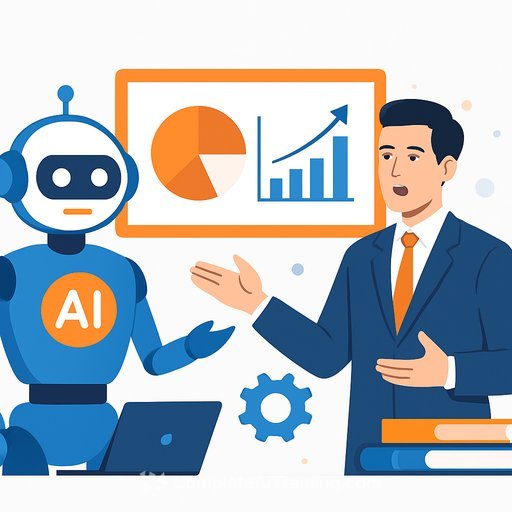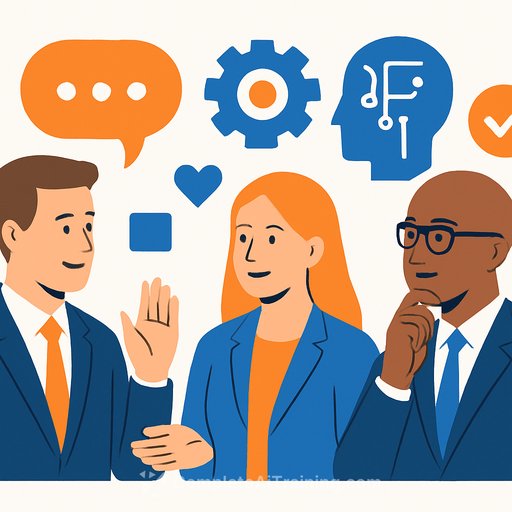AI Is Redefining HR: What's Working, What's Risky, and How to Get It Right
AI isn't just for tech teams anymore. It's in job descriptions, onboarding flows, training materials, and even talent reviews. HR is moving fast-sometimes faster than the playbook. The question isn't "if," it's "how" you make it work without creating new problems.
Here's the short version: most HR teams are already using AI, many without training or guardrails. That's a productivity boost with a risk label attached. The upside is clear. The plan is not.
The Case for AI in HR
According to a recent survey of HR professionals in the US and UK, 82% are already using AI at work. Typical tasks include analyzing employee feedback, writing job descriptions, building training materials, onboarding, and resume reviews.
Two-thirds say they've adopted AI agents that run full workflows. Nearly eight in ten report higher productivity. And 69%-including 83% in people analytics-say AI freed time for more strategic work. That's the shift HR has wanted for years.
Even large enterprises are leaning in. One vaccine maker merged its HR and tech teams to accelerate the shift. The signal is clear: HR is no longer a late adopter.
The Gap You Can't Ignore
Most HR pros using AI never received formal training. Less than one-third participated in job-specific programs. At companies that require AI, 35% report no training at all. That's a compliance and quality issue waiting to happen.
The confidence gap is real. Among those with role-specific training, 85% feel very or completely competent using AI. Among the self-taught, it drops to 63%. Forced adoption without support often backfires-more rework, more confusion, and higher risk of unfair outcomes.
Concerns about privacy, bias, and compliance are valid. If you operate in the US or UK, review regulator guidance before automating hiring or performance decisions. See the US EEOC's AI guidance in employment (EEOC AI) and the UK ICO's guidance on AI and data protection (ICO AI guidance).
What to Automate Right Now
- Job descriptions: draft, de-bias, and standardize competencies and leveling.
- Candidate communications: interview scheduling notes, status updates, and rejections with clear, consistent language.
- Onboarding: role-specific checklists, 30/60/90 plans, and FAQs for managers and new hires.
- Learning content: convert SOPs into quick-reference guides and micro-courses.
- Employee feedback analysis: summarize themes from surveys and exit interviews.
- Talent reviews: summarize performance inputs; highlight strengths, risks, and skill gaps. Human makes the final call.
Set Guardrails Before You Scale
- Human-in-the-loop: AI drafts; HR approves. No fully automated hiring or firing decisions.
- Data handling: keep PII and sensitive data out of open systems. Use approved tools with audit logs and access controls.
- Bias checks: test prompts and outputs for adverse impact. Document fixes and re-tests.
- Vendor review: confirm model provenance, data retention, and bias-mitigation claims in writing.
- Recordkeeping: save prompts, versions, and approvals for compliance and audits.
A 30-60-90 Plan for HR Leaders
- Days 1-30: Prove value safely
Pick 3 low-risk use cases (JDs, onboarding, internal comms). Create approved prompts/templates. Train a pilot group. Track time saved and error rates. - Days 31-60: Build muscle
Expand to feedback analysis and learning content. Add bias and privacy checks. Create a simple policy: what's in-bounds, what's not, how to escalate issues. - Days 61-90: Scale with standards
Roll out role-specific training by HR function. Integrate with ATS/LMS where possible. Launch weekly office hours and a shared prompt library.
Role-Specific Training Beats "AI 101"
- Talent acquisition: structured JD prompts, candidate email frameworks, screening summaries with fairness checks.
- People analytics: data hygiene, prompt patterns for analysis, and guidance on explaining insights without overclaiming causality.
- L&D: turning policies into micro-courses, quiz generation, and scenario writing with tone controls.
- HR business partners: meeting prep, headcount planning summaries, and change communications.
- Employee relations: neutral phrasing, policy alignment, and escalation templates-always human-reviewed.
Simple Prompt Patterns That Work
- Job description: "Write a JD for [role] at [level]. Use these competencies: [list]. Remove biased language. Keep to 300-400 words. Output with responsibilities, qualifications, and success metrics."
- Onboarding: "Create a 30/60/90 plan for a new [role] reporting to [manager]. Include learning goals, key relationships, systems access, and measurable deliverables."
- Feedback analysis: "Summarize themes from these comments. Tag by topic, sentiment, and suggested actions. Flag any compliance or safety issues."
Metrics That Matter
- Time saved per task (JDs, onboarding docs, reports).
- Cycle time: req to accept; time-to-schedule; time-to-onboard.
- Quality: hiring manager satisfaction, new-hire ramp speed, content error rate.
- Fairness: pass-through rates by demographic, flagged bias issues, rework due to compliance concerns.
- Adoption and confidence: trained users, weekly active users, self-rated competence.
About AI Agents in HR
Agents that run end-to-end workflows are here, and many teams are testing them. Use them for repeatable, lower-risk tasks first: scheduling, document drafts, knowledge lookups. Keep sensitive decisions in human hands until your controls and audits are airtight.
Make Training Non-Negotiable
If your team uses AI, training isn't a checkbox-it's the operating system. Give people clear guardrails, practical templates, and live practice. Refresh quarterly as tools and policies change.
If you want curated, role-specific options for HR and adjacent teams, explore this resource: AI courses by job.
Bottom Line
AI is already in your HR workflows. With the right training and guardrails, it saves hours and lifts the quality of your work. Without them, it creates risk and rework.
Pick a few use cases. Set the rules. Train the team. Then scale what proves itself.
Your membership also unlocks:






